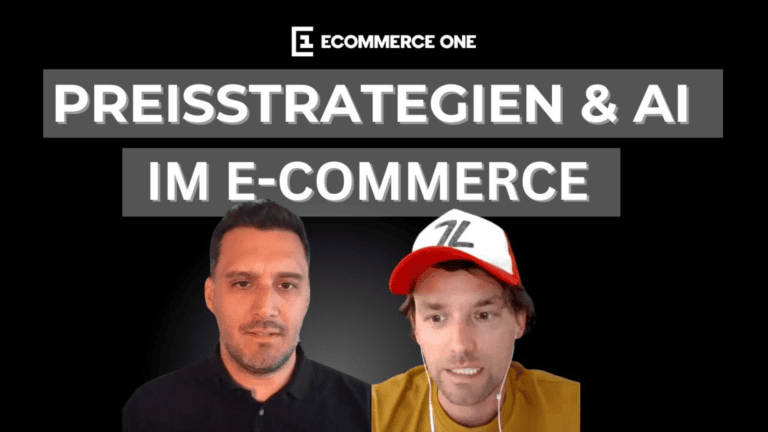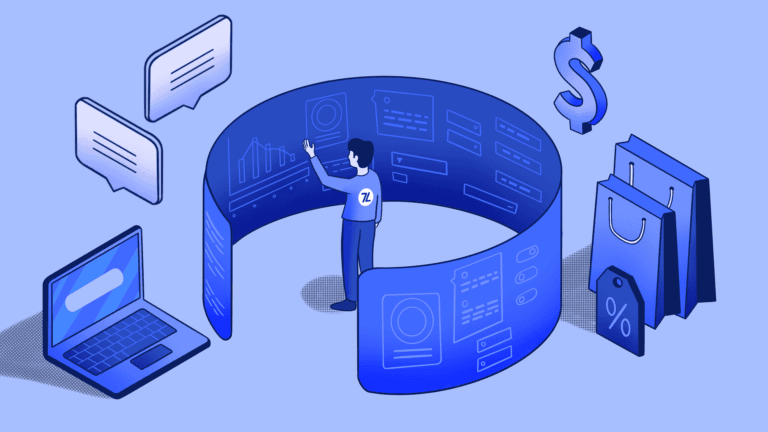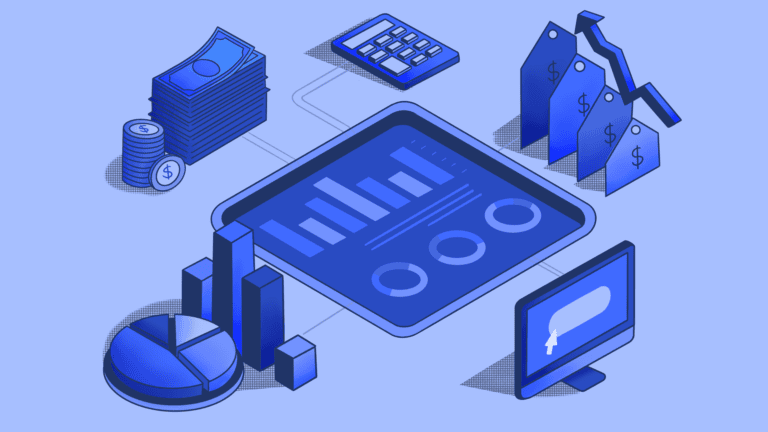Updated January 2024
Price optimization is an integral part of any business selling goods or services. In our latest piece, we explore the basics of price optimization, industry specifics and modern advancements.
Introduction
When considering price optimization, a consumer may believe this is a simple part of running a business. After all, you see a price, and if you’re willing to pay for it, you do – right?
What isn’t commonly seen are the factors that go into price optimization and determining the optimal price the customer’s willing to pay; there are many other factors to consider as well as your own company goals. That’s where price optimization comes in.
When done well, optimizing pricing can have a positive impact on your company’s success. By setting the right price, various business elements will improve, such as sales, marketing, growth and profitability.
But first, let’s get back to basics.
What is price optimization?
Price optimization allows businesses to make informed decisions based on customer and market data to find the most effective price point. Using data, instead of guesses, businesses can price their product or service to attract customers, therefore maximizing sales or profitability.
But why would you want to focus on this method, aside from the obvious? The goal of price optimization enables you to find the perfect balance between various KPIs and differing price stages.
Each product or service will have three major price stages: the initial price, the discounted price, and the promotional price. Let’s explore these further.
Initial price
The initial price is what your customer will see first and be part of the basis of their first impression. With the data in mind, starting prices should be optimized to match the product’s baseline demand without the need for any discounts or promotions.
When setting the initial price, using price optimization works particularly well for products and services with a secure base of long life-cycle products such as supermarkets, chemists, office supply stores, and commodities manufacturers.
Discounted price
The discounted price is often used by businesses selling products with a short life-cycle. These would be in line with changing fashions, seasonal relevance etc. We see this a lot within the clothing, airline and hospitality industries.
The benefit of this is that businesses can get rid of inventory while also enticing new customers with lower prices. The precise level of discounts over the life cycle is critical to the product’s overall profit contribution.
Promotional price
The promotional price is a temporary reduction of price for a product or service to create a sense of urgency and scarcity, giving a quick sales boost.
When optimizing promotional prices, businesses can introduce customers to a new product or a bundle to drive sales. This is true of ‘Buy One, Get One Free’ – a well-used promotional tactic.
But what else should you keep in mind?
Price optimization works best when thought of in a broader context, considering multiple elements while deciding on pricing.
The first of these should be internal data. Looking at previous products, how were they priced? What are the input costs of these products? These should be reviewed before any price optimization takes place.
Additionally, consider external data. What days of the week are the most popular for you? Are these factors such as the weather, school holidays or similar going to impact your pricing? How important is beating the price of a competitor in the overall plan for your business?
Also, keep in mind your KPIs when making decisions. What matters most to your business? Is it customer loyalty? The value of products sold? Profits? Or something else? Determining your KPIs is essential in determining optimal pricing as it enables you to measure success.
It is also essential to set your pricing policy and clearly outline how prices are set within the business, including maximum discounts and maximum price change after output. Both should be carefully considered.
B2B and B2C Price Optimization
It’s no surprise that companies spend a great deal of time towards price optimization. Whether they’re focusing on a B2B or B2C market, it is important to ensure that pricing is right and will sell quickly while still making a sizable profit.
When considering retail-focused price optimization in a B2C setting, applications are characterised by large demand volumes – meaning each transaction represents a very small proportion of total revenue.
Due to the nature of the demand, this is customised on life-cycle pricing capabilities to price merchandise as it moves through the stages of retail life such as; regular, introduction, promotion, markdown and clearance pricing.
On the other hand, B2B price optimization is characterised by relatively smaller transaction volumes – which each transaction representing a much larger proportion of total revenue. It is because of this that a different approach to the analytic processes that are needed is required.
The history of price optimization: the road to optimized prices
Price optimization is nothing new – for as long as humans have been trading and selling goods, the price has been at the forefront. While our ancestors wouldn’t have been able to analyze in the same capacity, they knew about pricing based on demand. Auctions are one of the oldest forms of this and something that is still fascinating today, even if they’re not as common.
From the dawn of trade, business owners have been applying simple strategies such as a standard mark up to the case cost and foresight to predict demand and achieve their own KPIs.
It was only much later that posted prices were introduced to eliminate the buyer or seller’s dissatisfaction when auctioning. These enabled a fair price that was agreed upon and, in theory, allowed a greater number of people to enjoy the product. This method streamlined the sales time and maximized profit from each purpose.
Of course, over time, trade evolved again as markets and the number of sellers expanded, allowing for more variety in products and improved economic welfare. That said, most pricing was still based on intuition and guesswork, which wasn’t as precise.
With this in mind, retailers had to seek a better option, particularly as the number of pricing decisions increased.
Example
A retailer that offers 1,000 products per season, making more than hundreds of thousands of pricing decisions a year. However, a leading omnichannel retailer with 30,000 product references sold in 10 countries through 3 distribution channels with list prices and quarterly promotions will make millions of pricing decisions a year.
Part of the decision-making process includes price differentiation, because the optimal price is specific to a customer transaction, many enterprises differentiate their offers and their prices.
That said, the degree of price differentiation, whether the unique price per product, segment or personalization, is strategic. Other factors such as regulation, market practice, and maturity of the pricing function are all intrinsic to the process, showing each pricing decision’s complexities.
In addition to this, the speed of price determinants continues to evolve faster and faster, meaning industries have had to adapt quickly to be still relevant. After all, a price set yesterday may no longer be valid today – highlighting the complexity of making pricing decisions.
From these changes, the concept of price optimization was born as technology continues to expand, our ability to predict trends and external factors to increase profit in a smart way.
Types of price optimization
When it comes to the types of price optimization available to you, you can choose from two types, one of which uses machine learning, and the other one which does not.
Every type of price optimization uses mathematical analysis to determine how customers will respond to different prices. Based on that, prices are optimized to best meet the company’s objectives. Machine learning technology takes the forecasting step to the next level: it can process much larger data sets and can consider various influencing factors to predict the effect of price changes.
Traditional price optimization
When it comes to traditional price optimization, sophisticated mathematical analysis is used to predict customer behavior based on data. One example would be using a regression analysis to determine the effect of competitor price changes on your company’s sales.
This analysis can be tailored to different customer segments by simulating how targeted customers will respond to price changes. Working in this way can provide multiple data-driven scenarios that provide in-depth forecasting through different channels.
In retail, the results of these analyses are often translated into a ruled based pricing logic. Examples for this are:
Cost-based pricing
Manufacturers most commonly use this method of pricing, as it requires the least amount of consumer information. It consists of using the cost of creating the product plus the percent markup they want, and is overall a simpler method.
Competitive pricing or competitor price matching
This method is often used in online retail, where companies crawl competitor prices and base their own price setting on the information gathered. Typical pricing rules ensure that the company’s price for a certain product reaches a certain rank (e.g. being the third cheapest available).
Example
For example, a traditional rule-based price optimization would take the form of a predefined set of rules. Such rules may include: a mark up on all products in the “food” category by 15%; reducing available brands in a marketing campaign by 10%; enlisting a 15% reduction in key-value items to equal the prices of a competitor; and adjusting all prices to end with 0.99.
Machine learning-based price optimization
At its core, machine learning-based price optimization uses complex algorithms to evaluate the change of demand at various price levels and measure price elasticity.
Over time, the developed algorithms can learn patterns from previous data and different data inputs – rather than being explicitly programmed to do so.
This method allows retailers to consider an extensive range of datasets, both internal and external. Some common examples include:
- Competitor data
- Weather
- Seasonality
- Special events / holiday
- Macroeconomic variables
- Operating costs
- Post-purchase data
- Warehouse information
In doing so, businesses can determine what path to follow in terms of pricing, such as the previously mentioned initial, discount and promotional prices and optimal prices according to their objectives.
In the future of retail, machine learning is quickly becoming an essential tool that allows businesses to take advantage of big data and see the results. Using the algorithms created for price optimization, companies can gain more insight and react quickly to market changes and the required price elasticity.
The algorithm can learn patterns from historical data and different data inputs and gives time back to the business, rather than fiddling with explicit programming. In essence, this highlights the power of machine learning.
As we move forward, the opportunities that can be gleaned by machine learning continue to evolve. Advanced software solutions combine this with forecasting algorithms that allow businesses to predict changes in revenue and profit – while also adapting to various environments and enabling more dynamic decisions. Additionally, while using the forecasting tool, a goal-driven, price steering approach is possible.
Want to find out more about the benefits of machine learning-based price optimization? Click here.
Companies then also test different price rules and analyse the effect on demand, revenue and profit. With a complex rule system in place, monitoring can take a significant amount of time.
There’s no doubt that this process is already very sophisticated; however, it can become lengthy without machine learning if you have to consider various factors while doing your analysis (e.g. considering weather, seasonality, marketing spend). Considering the data analysis alone, you’re looking at spreadsheet creation and maintenance as well as other tools to manually manage prices. If a business only has a handful of products and customers, this method can be worthwhile.
But when considering companies with tens of thousands of SKUs and thousands of customers, this method becomes increasingly complicated and partial to error. In this situation, which is a reality for most B2B and B2C businesses, a different approach is needed – which is where machine learning-based price optimization comes in.
Conclusion
To conclude, the role of price optimization may have been one we have seen since the dawn of trade, but due to our access to technology, it has evolved into a sophisticated system with better analysis and results.
Price optimization enables retailers to understand how customers react to different price strategies for products and services and set the best prices.
Thanks to machine learning, businesses can take key pricing variables into account; these include purchase histories, season, inventory, competitors’ pricing. They can ensure the best prices, even for vast catalogues of products or services, that can achieve the set KPIs. Because of this many retailers are embracing machine learning as part of their analysis and price optimization.
7Learnings helps you create a price optimization approach that works for your business.
With our dynamic pricing software, we have helped some of the leading online retailers in Europe to improve their pricing processes through machine learning. Pricing in retail is complex, and our software solution helps you react quickly to any relevant changes. To learn more about the potential of next-generation dynamic pricing, sign up for a free demo here.



